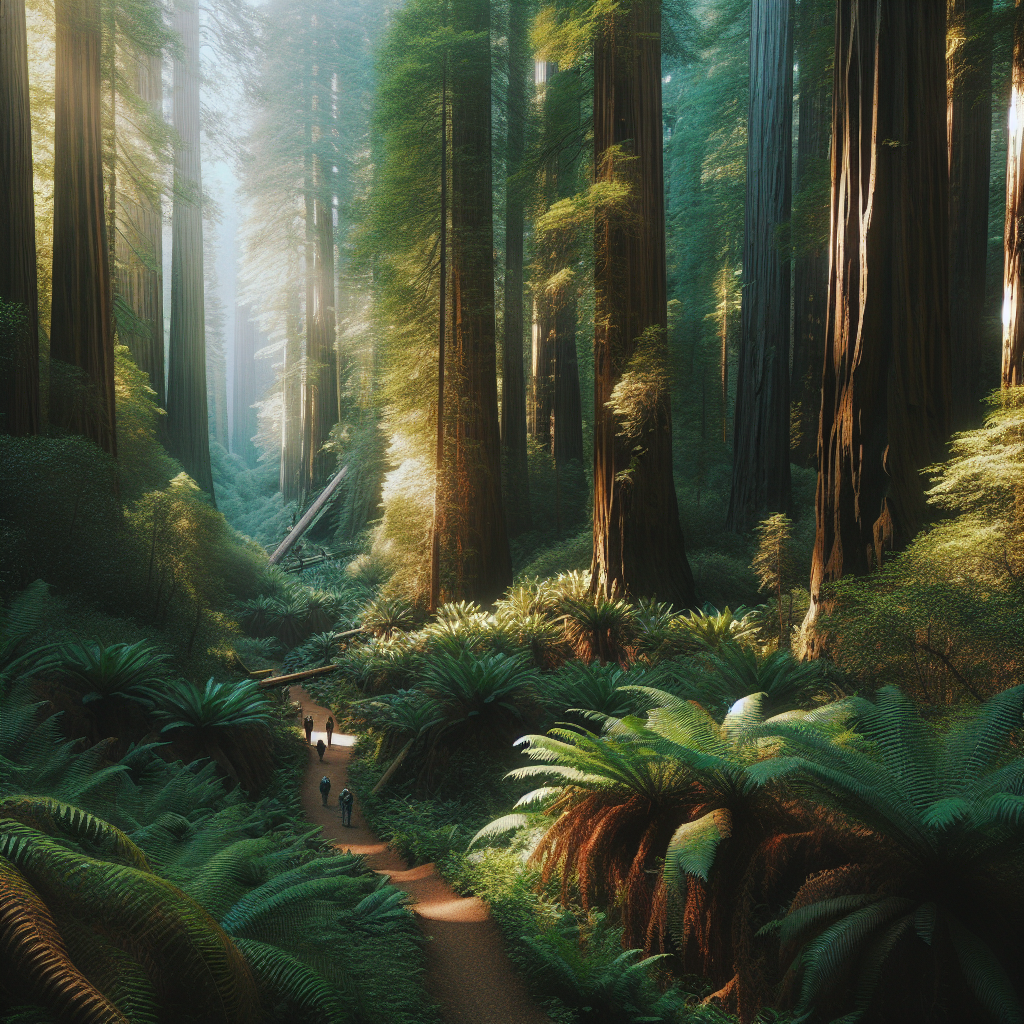Redwood National Park is home to a significant population of Black Bears (Ursus americanus), with the highest densities of black bears in California found within its forests and oak woodlands. These omnivorous creatures play a crucial role in the park’s ecosystem, and their presence is a source of fascination for visitors. In this comprehensive blog post, we’ll dive into the world of Redwood National Park’s black bears, exploring their behavior, habitat, and the park’s efforts to manage and protect these magnificent animals.
The Omnivorous Black Bears of Redwood National Park
Black bears in Redwood National Park are true omnivores, with their diet consisting primarily of plant materials such as grasses, berries, and acorns. However, they are also known to consume carrion and occasionally prey on small mammals. The exact population of black bears in the park is unknown, but the highest densities of black bears in the state of California are found in the northwestern region, where Redwood National and State Parks are located.
Bear Management in Redwood National and State Parks

Effective bear management is a top priority for the park’s staff, as they work to maintain a healthy and balanced ecosystem while ensuring the safety of visitors. The installation of bear-proof food storage lockers and trash and recycling receptacles in campgrounds, picnic areas, and at trailheads has significantly reduced the number of bears acquiring human food and trash. Visitors are strongly advised to use the campground bear-proof lockers for food and all scented items, and to dispose of garbage immediately in bear-proof trash cans.
Preventing Habituation and Dangerous Encounters
Black bears are known for their excellent memories and can quickly become accustomed to human foods. Once habituated, a bear may become frustrated when food is no longer available, leading to dangerous encounters with humans. Wildlife managers may have to destroy habituated bears if no other options are available. To prevent habituation, visitors should follow precautions such as preventing a black bear encounter, downloading an informative black bear safety brochure, and avoiding feeding bears or leaving garbage accessible to them.
Encountering Black Bears in Redwood National Park
Visitors may encounter bears in virtually all habitat types within the park, including forests, prairies, and near the beaches. However, conifer forests and oak woodlands are their preferred habitats. Black bear attacks are uncommon but can be predatory when they occur. Visitors who see a bear are encouraged to fill out a wildlife observation card, available at trailheads and information centers, to help park staff identify where bear-proof lockers and garbage cans are needed.
Unique Characteristics of Redwood National Park’s Black Bears
Redwood National Park’s black bears exhibit several unique characteristics that set them apart from their counterparts in other regions. For instance, the park’s black bears are known to be particularly adept at navigating the dense, old-growth forests, using their keen senses to locate food sources and avoid potential threats. Additionally, the park’s coastal location means that these bears may have access to a more diverse range of food sources, including marine life and seaweed.
Importance of Black Bears in the Redwood National Park Ecosystem
Black bears play a crucial role in the Redwood National Park ecosystem, serving as both predators and prey. As omnivores, they help to regulate the populations of smaller mammals and contribute to the dispersal of seeds through their foraging activities. Additionally, the presence of black bears is an indicator of a healthy, balanced ecosystem, as they require large, undisturbed habitats to thrive.
Visitor Responsibilities and Safety Precautions
Visiting Redwood National Park and coexisting with its black bear population requires a shared responsibility between visitors and park staff. Visitors must follow all safety guidelines, use the provided bear-proof storage and trash facilities, and report any concerning bear sightings or behaviors to park rangers. By working together, we can ensure the continued protection and preservation of Redwood National Park’s black bears and the overall health of the ecosystem.
Conclusion
Redwood National Park’s black bears are a captivating and integral part of the park’s natural landscape. Through responsible management practices and visitor education, the park’s staff work tirelessly to maintain a healthy and balanced bear population, ensuring the safety of both the animals and the park’s visitors. By understanding the unique characteristics and behaviors of these magnificent creatures, we can appreciate the vital role they play in the Redwood National Park ecosystem and work to protect them for generations to come.

